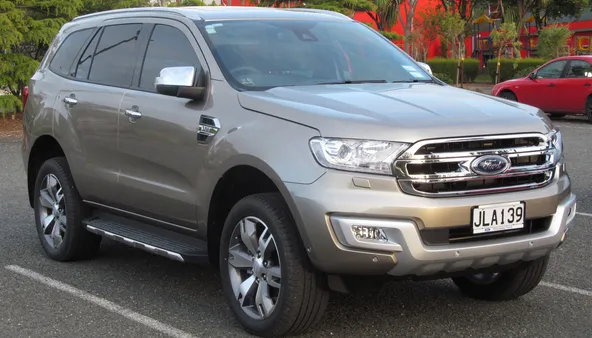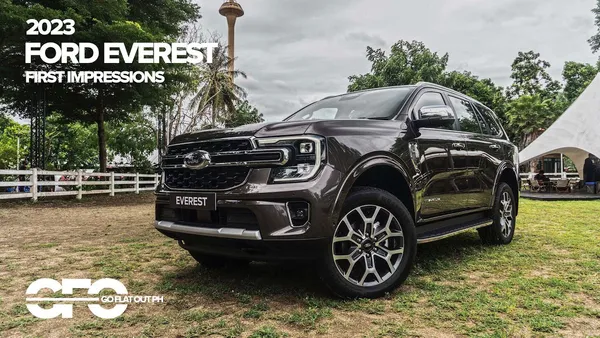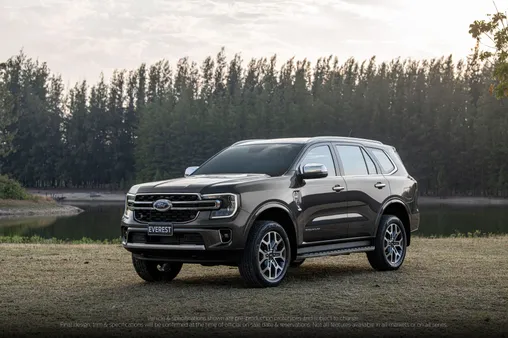Table of Contents
Embark on a journey through the Ford Everest Heritage: From the First Generation to Today. Explore the evolution of this iconic SUV, from its humble beginnings to its current status as a global adventure companion. At Westernfordhcm, we delve into the key features, innovations, and impact of each generation, showcasing the Everest's unwavering commitment to off-road excellence and versatility.

Ford Everest Heritage: From the First Generation to Today: A Comprehensive History
Generation | Model Year | Notable Features |
First | 2003-2009 | - 4x4 capability, with "TORQUE-ON-DEMAND" - 3.0L Duratorq TDCi engine - 5-speed automatic transmission |
Second | 2009-2015 | - Larger body and platform - 2.5 liter or 3.2 liter engine - Added advanced safety features |
Third | 2015-2022 | - Redesigned exterior and interior - 2.2L or 3.2L engine options - Improved fuel efficiency, safety features, and off-road capabilities |
Fourth | 2022-Present | - Bold new design, larger dimensions - 2.0L or 3.0L EcoBoost engine - Terrain Management System, SYNC 4A infotainment system, and enhanced safety features |
I. Ford Everest Heritage: The First Generation
The inaugural Ford Everest, introduced in 2003, marked the genesis of a legacy that would endure for years to come. Built on the robust platform of the Ford Ranger, the Everest inherited its predecessor's off-road prowess while introducing a new level of refinement and comfort to the segment. Its 3.0L Duratorq TDCi engine delivered ample power and torque, while the 5-speed automatic transmission ensured smooth and efficient gear changes. The Everest's 4x4 capability, featuring "TORQUE-ON-DEMAND," provided exceptional traction and handling on challenging terrains.
The Everest's interior was designed with both functionality and comfort in mind. Its spacious cabin offered ample legroom and headroom for all passengers, while the ergonomic controls and intuitive dashboard layout made driving a breeze. The Everest's impressive list of standard features included air conditioning, power windows, and a premium audio system, providing a comfortable and connected experience on every journey.
Generation | Model Year | Notable Features |
First | 2003-2009 | - 4x4 capability, with "TORQUE-ON-DEMAND"- 3.0L Duratorq TDCi engine- 5-speed automatic transmission |
The Ford Everest quickly gained popularity among adventure enthusiasts and families alike. Its versatility and ruggedness made it an ideal choice for exploring the great outdoors, while its comfort and convenience features ensured a pleasant experience on long road trips. The Everest's reputation for reliability and durability further solidified its position as a trusted companion for those seeking adventure and exploration.
As the first generation of the Ford Everest drew to a close, it had firmly established itself as a formidable force in the SUV market. Its combination of off-road capability, comfort, and value for money had won the hearts of countless drivers, setting the stage for the continued success of the Everest legacy in the years to come.
II. Ford Everest Heritage: The Second Generation
Enhanced Performance and Refinement
The second-generation Ford Everest, introduced in 2009, marked a significant leap forward in terms of performance and refinement. It featured a larger body and platform, providing more interior space and a more comfortable ride. The engine options were upgraded to include a 2.5-liter or 3.2-liter engine, delivering improved power and torque. Advanced safety features were also added, such as electronic stability control and traction control, enhancing the overall driving experience.
Read more about Comparing Ford Everest Trims
Technological Advancements
The second-generation Everest embraced technological advancements, integrating a user-friendly infotainment system with Bluetooth connectivity and a premium sound system. It also introduced a rear-view camera, making parking and reversing maneuvers easier and safer. These features enhanced the overall convenience and comfort for drivers and passengers alike.
Feature | Description |
Larger body and platform | Increased interior space and comfort |
Upgraded engine options | Improved power and torque |
Advanced safety features | Enhanced driving experience |
User-friendly infotainment system | Bluetooth connectivity and premium sound system |
Rear-view camera | Easier parking and reversing |

Ford Everest Heritage: The Second Generation
III. Ford Everest Heritage: The Third Generation
The third generation of the Ford Everest, introduced in 2015, marked a significant evolution in the vehicle's design, performance, and capabilities. This generation saw the Everest undergo a complete redesign, resulting in a more modern and sophisticated appearance. The interior was also revamped, offering improved comfort, convenience, and technology features.
Under the hood, the third-generation Everest received a range of engine options, including a 2.2L Duratorq TDCi diesel engine and a 3.2L Duratorq TDCi diesel engine. These engines provided ample power and torque, making the Everest capable of handling a variety of driving conditions, from urban commutes to off-road adventures.
Model Year | Notable Features |
2015-2018 | - Redesigned exterior and interior- Improved fuel efficiency and safety features- Terrain Management System |
2019-2022 | - Updated exterior styling- Enhanced infotainment system- Advanced driver-assist technologies |
In terms of off-road capabilities, the third-generation Everest continued to excel. It featured a robust chassis, a sophisticated four-wheel drive system, and a range of off-road driving modes. These features allowed the Everest to tackle challenging terrain with confidence, making it a popular choice for adventure enthusiasts.
The third-generation Ford Everest also introduced a number of advanced safety features, including lane departure warning, adaptive cruise control, and automatic emergency braking. These features helped to enhance the safety of both the occupants and other road users.
Overall, the third-generation Ford Everest represented a significant advancement in the vehicle's evolution. It offered a combination of rugged off-road capabilities, modern design, and advanced technology, making it a versatile and capable SUV for a wide range of drivers.
Related posts:
- Ford Everest vs Toyota Fortuner: Head-to-Head Comparison
- Exploring the Interior Features of the Ford Everest
- Review: Ford Everest's Terrain Management System

Ford Everest Heritage: The Third Generation
IV. Ford Everest Heritage: The Fourth Generation
The fourth generation of the Ford Everest, introduced in 2022, represents a significant evolution in the model's history. With a bold new design, larger dimensions, and enhanced capabilities, the 2022 Everest continues to uphold the legacy of ruggedness and adventure that has made it a popular choice among off-road enthusiasts and families alike. Ford Everest vs Toyota Fortuner: Head-to-Head Comparison
At the heart of the fourth-generation Everest lies a choice of two powerful and efficient engines: a 2.0-liter or 3.0-liter EcoBoost V6. These engines are paired with a 10-speed automatic transmission and a Terrain Management System, which allows drivers to optimize the vehicle's performance for various off-road conditions. Review: Ford Everest's Terrain Management System
Generation | Model Year | Notable Features |
First | 2003-2009 | - 4x4 capability, with "TORQUE-ON-DEMAND"- 3.0L Duratorq TDCi engine- 5-speed automatic transmission |
Second | 2009-2015 | - Larger body and platform- 2.5 liter or 3.2 liter engine- Added advanced safety features |
Third | 2015-2022 | - Redesigned exterior and interior- 2.2L or 3.2L engine options- Improved fuel efficiency, safety features, and off-road capabilities |
Fourth | 2022-Present | - Bold new design, larger dimensions- 2.0L or 3.0L EcoBoost engine- Terrain Management System,SYNC 4A infotainment system, and enhanced safety features |
In terms of design, the fourth-generation Everest features a more muscular and aggressive stance, with a wider grille, larger headlights, and a more sculpted body. The interior has been redesigned to be more comfortable and user-friendly, with a new infotainment system, a digital instrument cluster, and improved materials throughout. Exploring the Interior Features of the Ford Everest
The fourth-generation Everest also comes with a range of advanced safety features, including adaptive cruise control, lane-keeping assist, and automatic emergency braking. These features help to protect drivers and passengers from potential accidents and make the Everest a safer vehicle to drive. Safety Features: A Deep Dive into Ford Everest's Technology

Ford Everest Heritage: The Fourth Generation
V. Conclusion
The Ford Everest Heritage is a testament to the enduring spirit of exploration and adventure. Through four generations, the Everest has consistently pushed the boundaries of off-road capability, while also embracing technological advancements and evolving consumer needs. As it continues to shape the future of off-roading, the Ford Everest stands as a symbol of ruggedness, reliability, and the unwavering pursuit of adventure.